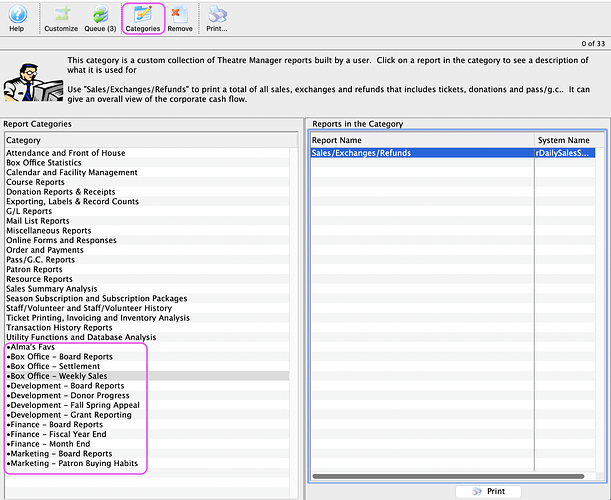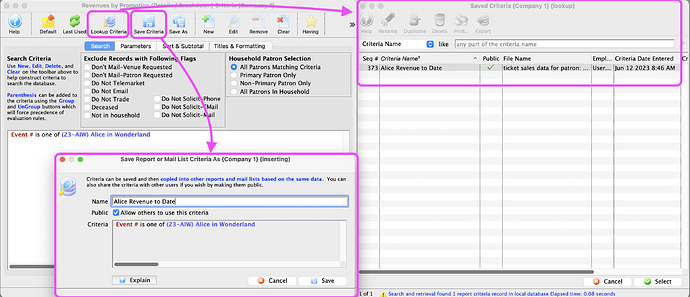
1. Test Report and Mail List Criteria Before Running
Ever wondered how much data would be accessed based on a specific set of criteria? Now you can easily find out before actually running the process. By utilizing the Test Button , you can obtain valuable insights into the amount of data that would be returned by the given criteria. The Test button displays the number of records that would be retrieved. This functionality is applicable not only to reports but also in mail lists, allowing you to gauge the data volume beforehand.
Having this information at your disposal is immensely helpful in planning and decision-making. It gives you a clear understanding of the scale of data that will be involved, enabling you to make adjustments or refine your criteria if necessary.
2. Custom Report Categories
Creating Custom Report Categories is a perfect method for generating personalized report categories, making frequently utilized reports easily accessible the next time you need ‘that’ report. You might consider establishing distinct report categories by department, employee, process, or procedure. Simply create a custom report category. Then drag and drop your favorite or frequently used reports on top of the category. These reports will be stored in your custom and in their original default categories.
3. Saved Report Criteria
Did you know you can Save Criteria for yourself and other employees to use? Often times staff are looking up the same kind of data in different parts of the Reports Module. To make life a little easier, Theatre Manager lets you Save Criteria so everyone can see them publicly. In the example below, we’re saving the criteria: Event# is one Alice In Wonderland .
Then, using the Lookup Criteria function, anyone in the database can pull a Saved Criteria from a list into their reports or Mail Lists. Give it a try with your team!



